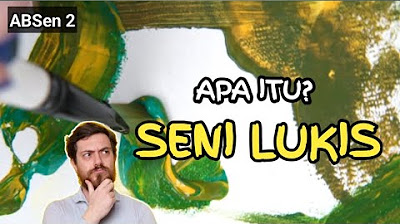Como reparar paredes e pintar | LEROY MERLIN
Summary
TLDRThis video demonstrates the step-by-step process of preparing a surface for painting. The presenter outlines the tools required, including a spatula, brush, roller, and sanding tools, as well as materials such as water-based primer and lightweight plaster. The process begins with applying primer, followed by filling imperfections with plaster, sanding, and applying a second coat of primer. After allowing time for drying, the final step involves painting the surface. The video also offers helpful tips, such as waiting for proper drying times and using gloves to avoid stains, ensuring a smooth and professional-looking finish.
Takeaways
- 😀 Use a spatula, roller, brush, and sandpaper to prepare the surface for painting.
- 😀 Choose the right type of plaster based on the size of the hole being filled.
- 😀 Apply a primer to improve paint adhesion, create a uniform finish, and reduce the amount of paint needed.
- 😀 Mix one part primer with four parts water for optimal results.
- 😀 Wearing vinyl gloves helps reduce mess when working with paint.
- 😀 Use a roller to apply a thin, even layer of primer, moving in both horizontal and vertical directions.
- 😀 Wait two hours for the primer to dry before proceeding with surface repair.
- 😀 Fill small surface defects using lightweight plaster and allow it to dry for 30 minutes.
- 😀 After plaster dries, sand the surface smooth using a sanding block.
- 😀 Clean the surface to remove dust before applying the second coat of primer, focusing only on patched areas.
- 😀 Apply the final coat of paint after 30 minutes of drying time for the primer, and let the paint dry for 8 hours before applying a second coat.
Q & A
What are the primary tools needed to prepare the surface for painting?
-The primary tools needed are a spatula (or larger spatula for bigger surfaces), a mixing container for the primer, a brush, a roller, sandpaper for smoothing, and a lightweight filler (plaste).
Why is primer important before applying paint?
-Primer is important because it helps the paint adhere better, ensures a uniform finish, and reduces the amount of paint required for the final coat.
How is primer mixed before application?
-The primer is mixed by combining one part primer to four parts water. This dilution ensures better coverage and easier application.
What type of primer should be used?
-The type of primer depends on the surface being worked on. In the tutorial, an aqueous primer was chosen for better paint adhesion and a smoother finish.
What is the benefit of using a lightweight filler (plaste) in surface preparation?
-A lightweight filler is used because it doesn’t shrink after drying, and it is easy to sand, allowing for a smooth surface before the final paint application.
How long should the primer dry before moving on to the next step?
-The primer should dry for about 2 hours before starting the surface repair process.
What should be done after applying the filler to repair imperfections?
-After applying the filler, you need to wait for it to dry for about 30 minutes, then sand it with a block sander to smooth the surface.
Why is it necessary to apply a second coat of primer?
-A second coat of primer is applied specifically to the patched areas to ensure a consistent finish and better adhesion for the final paint.
How long should you wait after applying the second coat of primer before painting?
-You should wait about 30 minutes after applying the second coat of primer to allow it to dry before proceeding with painting.
What type of paint is used for the final coat, and is it ready to use?
-The final paint chosen is a pre-mixed green paint, which is ready for use. However, it can be diluted with up to 10% water if needed for a better application.
Outlines

Cette section est réservée aux utilisateurs payants. Améliorez votre compte pour accéder à cette section.
Améliorer maintenantMindmap

Cette section est réservée aux utilisateurs payants. Améliorez votre compte pour accéder à cette section.
Améliorer maintenantKeywords

Cette section est réservée aux utilisateurs payants. Améliorez votre compte pour accéder à cette section.
Améliorer maintenantHighlights

Cette section est réservée aux utilisateurs payants. Améliorez votre compte pour accéder à cette section.
Améliorer maintenantTranscripts

Cette section est réservée aux utilisateurs payants. Améliorez votre compte pour accéder à cette section.
Améliorer maintenantVoir Plus de Vidéos Connexes

Basic Application Of Stucco Cement

NOITE - MAT - 03.12.24 - 2ª série

Acrylic Painting Tutorial - Starry Night by Van Gogh

PENGERTIAN, ALIRAN, TEKNIK, DAN PROSEDUR SENI LUKIS || Seni Budaya Kelas 9 "Ayo Belajar SENi eps.2"

How to Level and Torte a Cake | Wilton

Teknik Olahan Produk Mebel Bambu (Pelatihan Pengolahan Bambu)
5.0 / 5 (0 votes)
